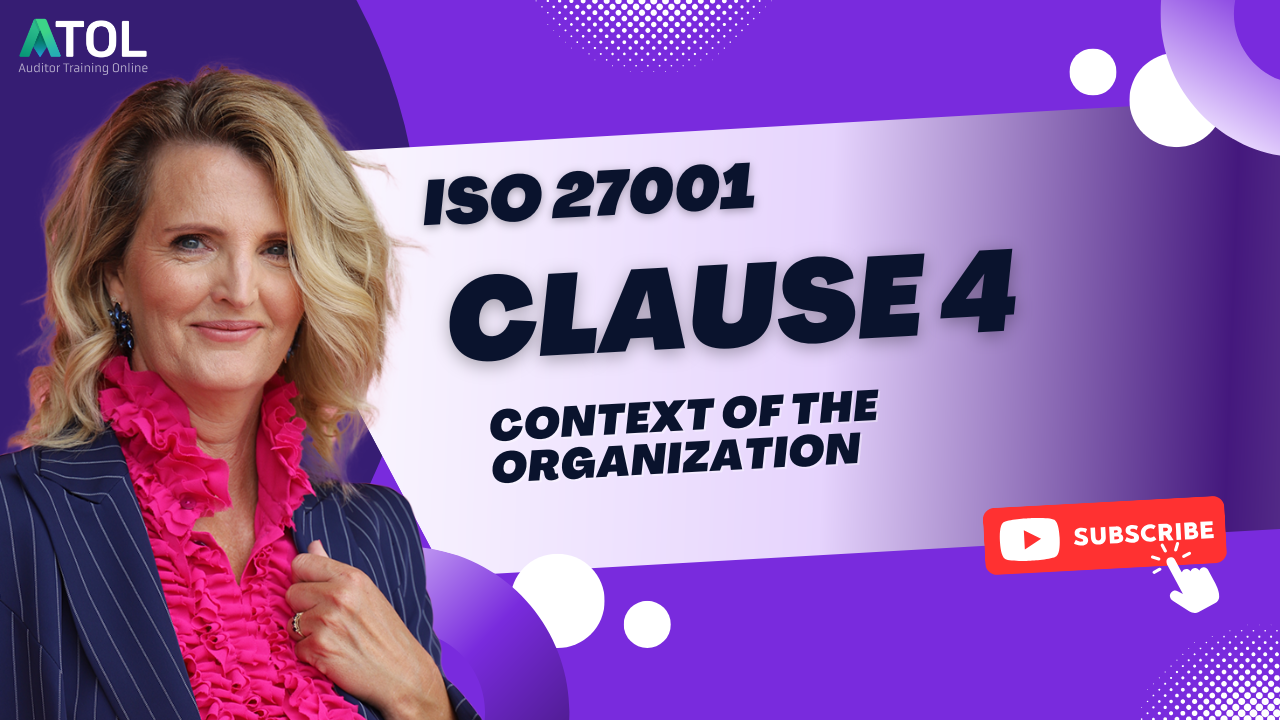ISO 27001 Clause 4: The Step Most People Rush… and Regret

If ISO 27001 were a road trip, Clause 4 would be the moment you stop to actually check the map. Skip it, and you’ll be halfway down the wrong highway before you realise you’ve left your luggage — and maybe your passport — at home.

Clause 4 Context of the Organization is where you set the scene for your Information Security Management System (ISMS). It’s not flashy, and it’s not about controls or tech… but get it wrong and the rest of your ISMS can crumble like a badly baked cake.
Here’s how it works — and why slowing down here will save you headaches later.
First, Know Your Surroundings (4.1 Context)
You can’t protect what you don’t understand.
Clause 4.1 is all about identifying the internal and external issues that could impact your ISMS.
Think:
- Inside your business: structure, policies, employee skills, tech infrastructure
- Outside: laws, market trends, emerging tech (AI, quantum computing), cultural factors
Hypothetical example: Imagine you’ve built a great internal process for data security… but you forgot to factor in a new privacy law in one of your overseas markets. Six months later, your inbox is full of “URGENT: Non-compliance” emails. A quick scan of external issues at the start would have caught it.
Tip: Don’t do this in a bubble. Pull in voices from across the organisation — IT, legal, HR — and document your findings.
Who Actually Cares? (4.2 Interested Parties)
Spoiler: more people than you think.
Clause 4.2 is about figuring out who has a stake in your information security — and what they expect from you.
Your “interested parties” could be:
- Customers (keep my data safe)
- Regulators (follow the law)
- Suppliers (protect our shared systems)
- Staff (give me secure tools to work with)
And here’s the trap: you can’t just list them. You need to decide which expectations you’ll address in your ISMS — and show how.
You can get this info through surveys, audits, focus groups, or just good old-fashioned conversations. Whatever you do, write it down. Auditors love a tidy table of who, what, and why.
Draw the Line (4.3 Scope)
This is where you answer: What exactly is covered by your ISMS?
It could be:
- Your whole organisation
- One department
- A single product or platform
Sounds simple — but here’s where people trip up.
Hypothetical example: You scope your ISMS to cover your customer platform. Great. But that platform runs on a hosting service you didn’t include. Suddenly you’ve got a big dependency outside your control — and outside your audit prep.
Your scope will be printed on your ISO certificate, so make it accurate and link it to your Statement of Applicability. And yes, write down those third-party interfaces.
The “Easy” Clause (4.4 The ISMS Itself)
This one’s short: you need to establish, implement, maintain, and continually improve your ISMS.
The catch? Continual improvement is not just a nice-to-have. ISO 27001 expects you to keep evolving your system — because the threats aren’t standing still.
Why This Clause Deserves More Love
Most people skim Clause 4 because it doesn’t feel technical. But this is where you:
- Set the boundaries for what’s in (and out) of your ISMS
- Identify who you’re protecting and from what
- Build the map you’ll follow for the rest of your ISO 27001 journey
Rushing it is like skipping the blueprint and jumping straight to building — you’ll spend twice as long fixing things later.
Want to skip the trial and error?
At Auditor Training Online, we’ve helped organisations all over the world set the right foundations for ISO 27001 — and we can help you too.
/27001%20Lead.jpg?width=700&name=27001%20Lead.jpg)
Lead Auditor Information Security Management Systems
AU$1,895.00In today’s digital world, information security is non-negotiable. Organizations are seeking professionals who can safeguard sensitive data, ensure compliance, and maintain robust systems. This course offers more than just theory — it delivers practical, audit-ready skills you can immediately apply in real-world scenarios.
Your Quick-Start Checklist
✅ List internal and external issues (and their impact)
✅ Identify interested parties and their expectations
✅ Define your ISMS scope clearly and accurately
✅ Commit to continual improvement






